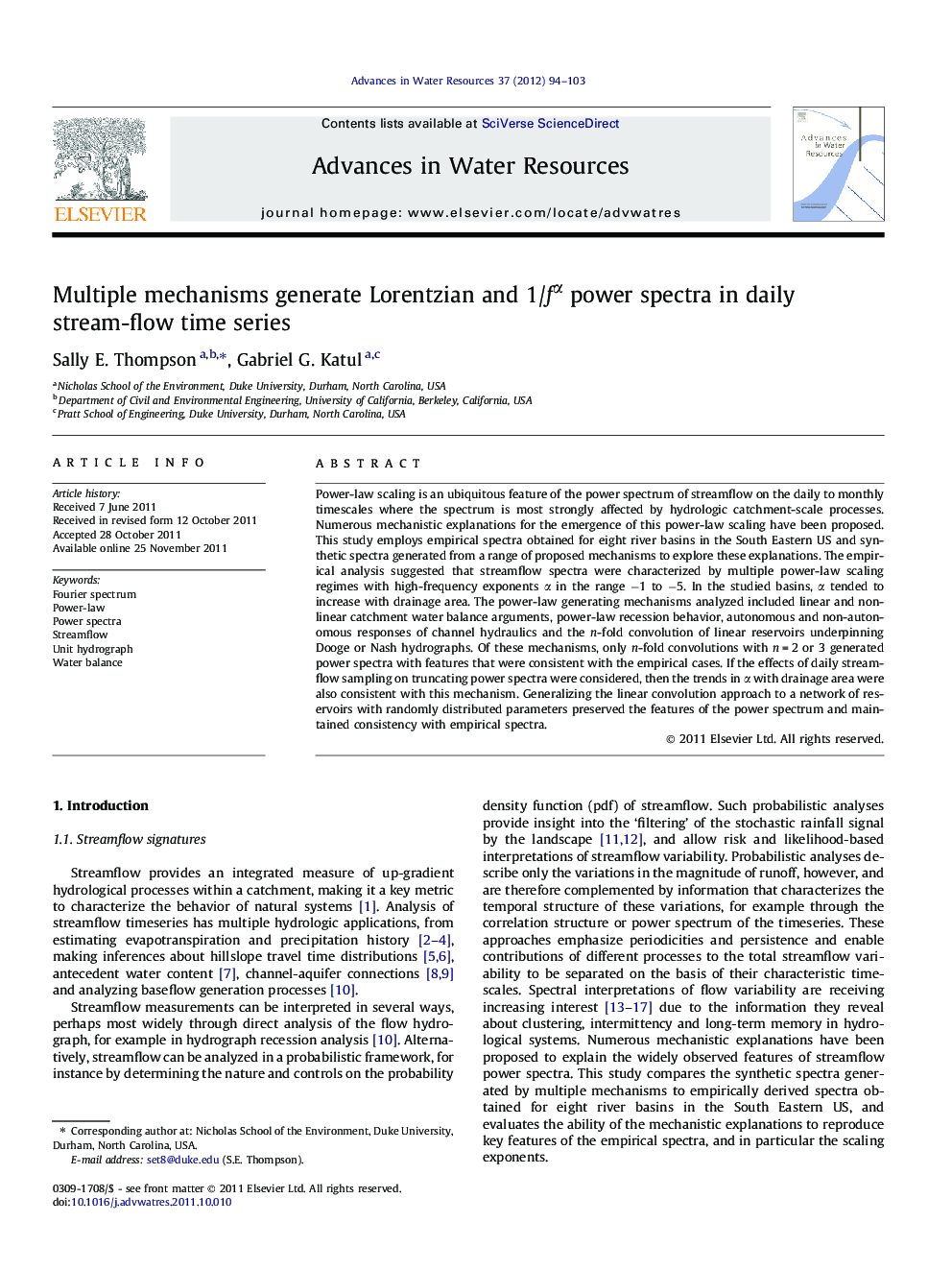| Article ID | Journal | Published Year | Pages | File Type |
|---|---|---|---|---|
| 4525982 | Advances in Water Resources | 2012 | 10 Pages |
Power-law scaling is an ubiquitous feature of the power spectrum of streamflow on the daily to monthly timescales where the spectrum is most strongly affected by hydrologic catchment-scale processes. Numerous mechanistic explanations for the emergence of this power-law scaling have been proposed. This study employs empirical spectra obtained for eight river basins in the South Eastern US and synthetic spectra generated from a range of proposed mechanisms to explore these explanations. The empirical analysis suggested that streamflow spectra were characterized by multiple power-law scaling regimes with high-frequency exponents α in the range −1 to −5. In the studied basins, α tended to increase with drainage area. The power-law generating mechanisms analyzed included linear and nonlinear catchment water balance arguments, power-law recession behavior, autonomous and non-autonomous responses of channel hydraulics and the n-fold convolution of linear reservoirs underpinning Dooge or Nash hydrographs. Of these mechanisms, only n-fold convolutions with n = 2 or 3 generated power spectra with features that were consistent with the empirical cases. If the effects of daily streamflow sampling on truncating power spectra were considered, then the trends in α with drainage area were also consistent with this mechanism. Generalizing the linear convolution approach to a network of reservoirs with randomly distributed parameters preserved the features of the power spectrum and maintained consistency with empirical spectra.
► Mechanistic explanations of power-law scaling in streamflow spectra are reviewed. ► Classical Dooge or Nash conceptualization consistent with observed spectra. ► Generalization of linear convolution to nonlinear networks preserves spectral scaling. ► Signature of progressive reddening detectable in soil moisture and piezometer data. ► Different mechanisms produce similar spectral scaling in discharge, spectra should be interpreted cautiously.
